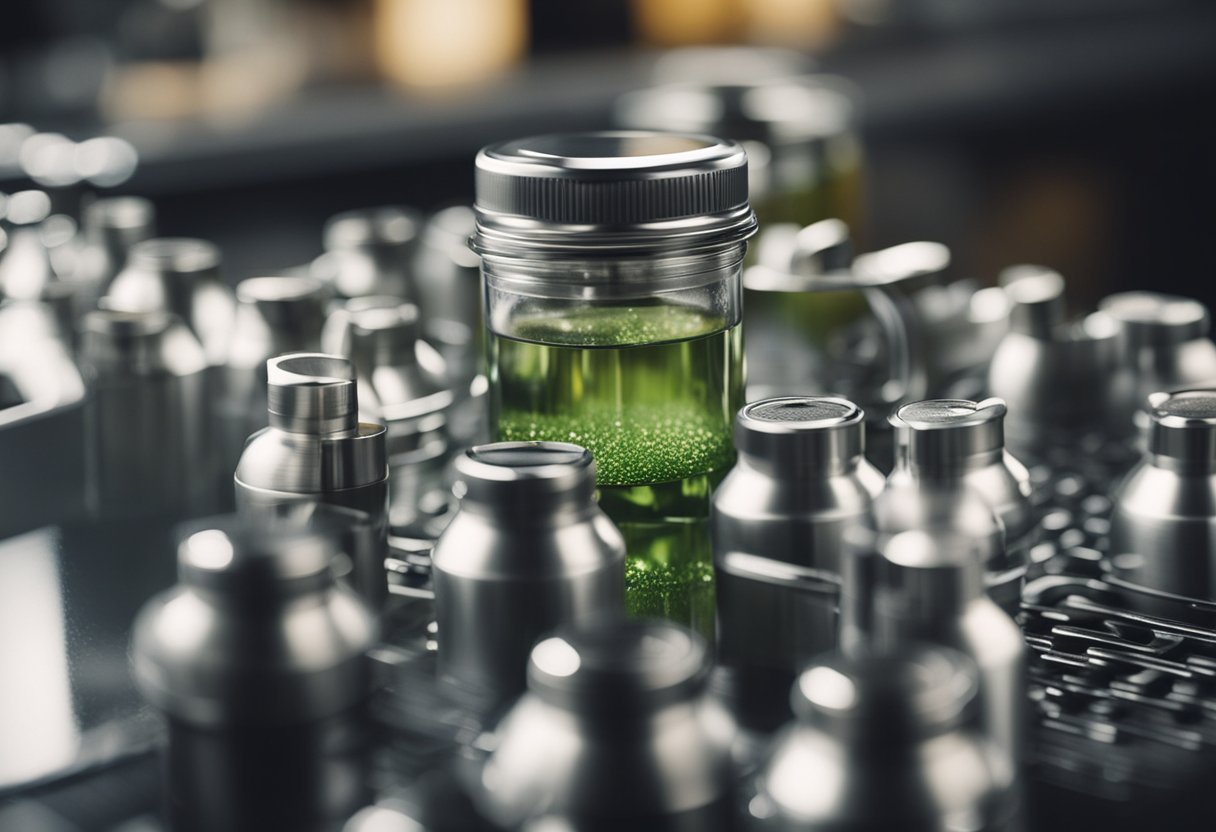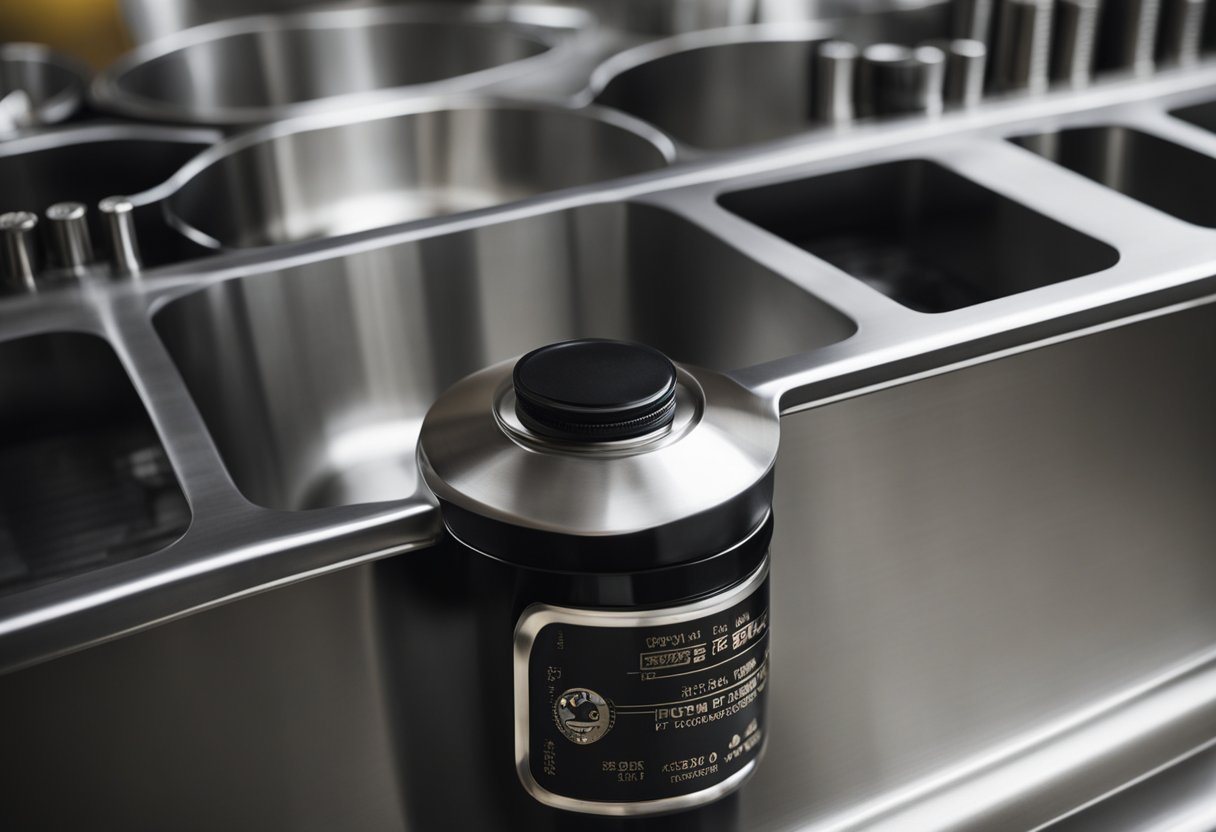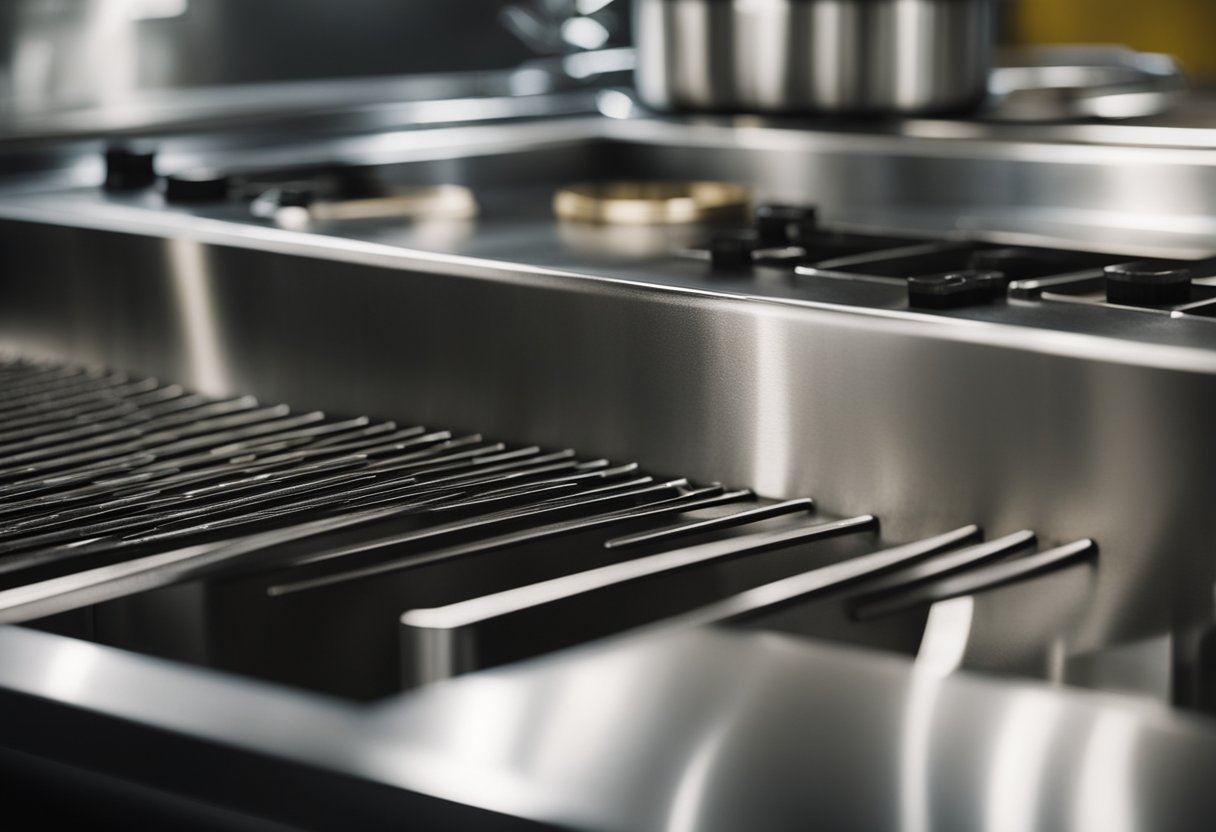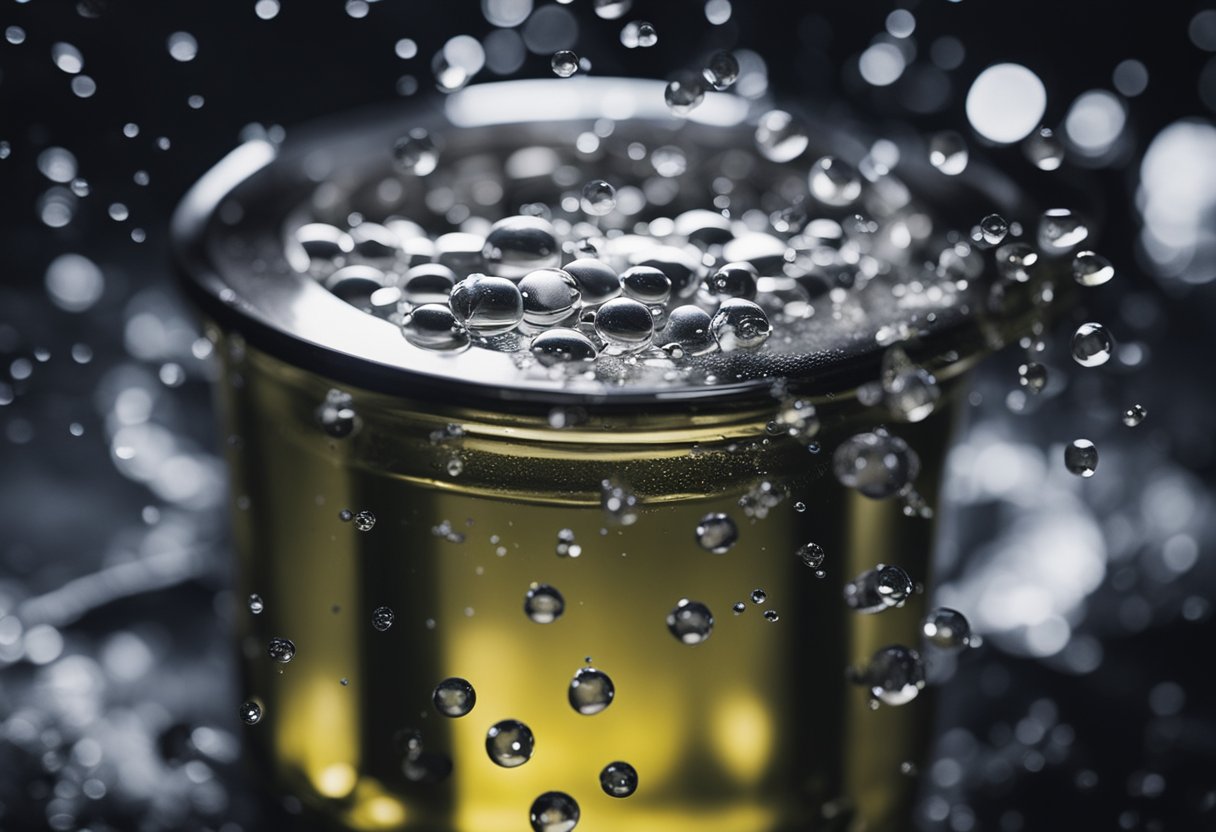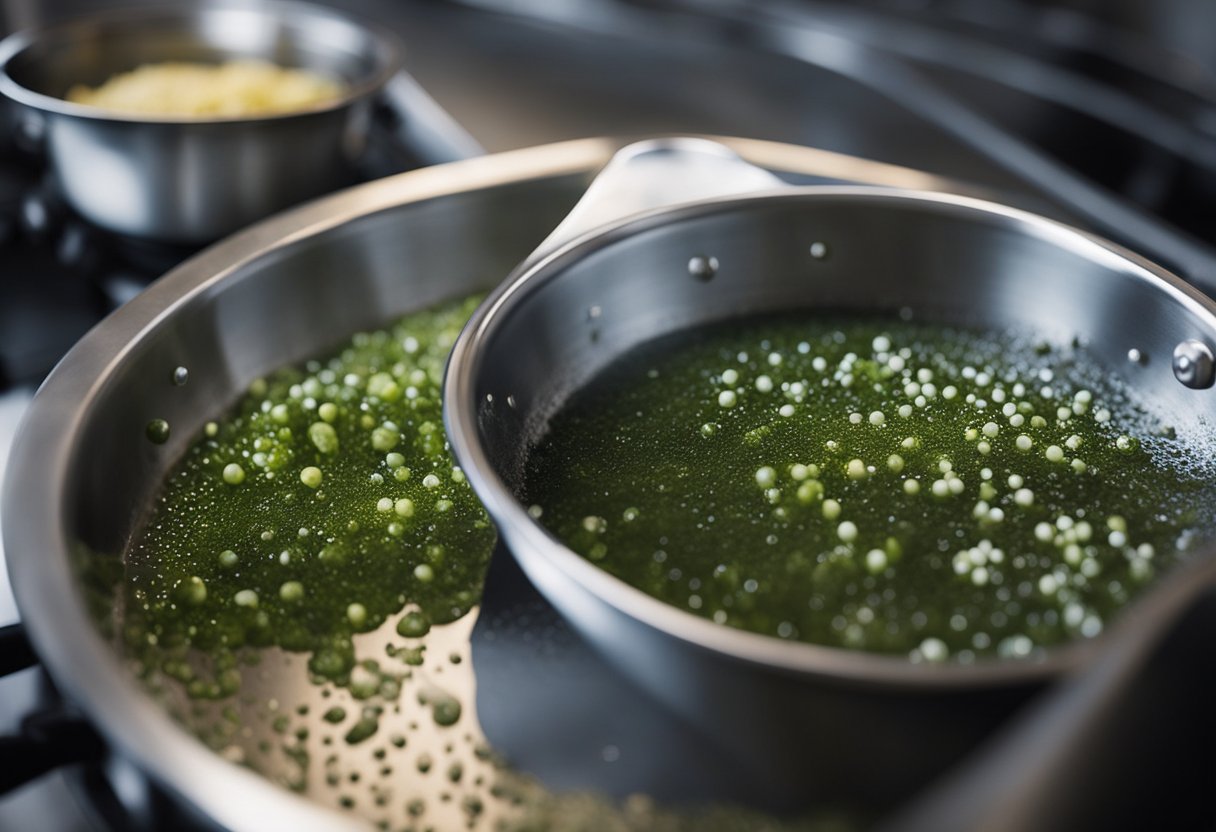I have always been fascinated by the unique look of blackened stainless steel. It’s a beautiful and distinctive finish that can add a touch of elegance to any project. While there are many ways to achieve this look, one of the most popular methods is blackening stainless steel with vinegar. This method is relatively simple and can be done with just a few household items.
Before diving into the blackening process, it’s important to understand the materials involved. Stainless steel is a popular material because of its durability and resistance to corrosion. However, the surface of stainless steel is not naturally black. To achieve the blackened look, a chemical reaction needs to occur that alters the surface of the metal. Vinegar is a popular choice for this process because it is readily available and safe to use.
Key Takeaways
- Blackening stainless steel with vinegar can be done with just a few household items.
- Stainless steel is a durable material that can be altered to achieve the blackened look.
- Vinegar is a safe and effective chemical to use in the blackening process.
Understanding the Materials
Stainless Steel vs. Other Metals
When it comes to blackening metals, it’s important to understand the properties of the metal you’re working with. Stainless steel is a popular choice for many applications due to its corrosion resistance, durability, and aesthetic appeal. However, it can be more challenging to blacken than other metals such as carbon steel or cast iron.
Stainless steel is an alloy made up of iron, chromium, and other elements such as nickel and molybdenum. The chromium in stainless steel forms a protective layer of chromium oxide on the surface, which helps to prevent rust and corrosion. However, this layer can also make it difficult for the vinegar to penetrate the surface of the steel and create a blackened finish.
Carbon steel, on the other hand, doesn’t have the same protective layer as stainless steel, making it easier to blacken. Cast iron also has a rougher surface texture than stainless steel, which can help the vinegar to penetrate the surface and create a darker finish.
Properties of Vinegar
Vinegar is a weak acid that contains acetic acid. This acid is what causes the reaction with the metal, creating a blackened finish. The strength of the vinegar can vary, with some recipes calling for distilled white vinegar and others using apple cider vinegar.
It’s important to note that vinegar can also be corrosive to certain metals if left on for an extended period of time. This is why it’s important to rinse the metal thoroughly after the blackening process is complete.
In addition to vinegar, there are other substances that can be used to blacken metal, such as oil and hot chemicals. Each method has its own advantages and disadvantages, and the choice of method will depend on the desired finish and the properties of the metal being used.
Overall, understanding the properties of both the metal and the blackening agent is crucial to achieving the desired finish when blackening stainless steel with vinegar.
The Science Behind Blackening
As a metal, stainless steel is prone to rusting, which is why many people choose to blacken it. One of the most popular methods for blackening stainless steel is to use vinegar, which is a weak acid that can cause the metal to oxidize and turn black.
The secret behind vinegar’s ability to blacken stainless steel is acetic acid, which is the main component of vinegar. When vinegar comes into contact with stainless steel, the acetic acid reacts with the metal, causing it to oxidize. This oxidation process is what causes the metal to turn black.
One way to enhance the blackening effect is to heat the vinegar. When vinegar is heated, it releases more acetic acid, which can speed up the oxidation process. However, it’s important to note that heating vinegar can also cause it to release fumes that can be harmful if inhaled.
Another way to enhance the blackening effect is to add other chemicals to the vinegar. For example, sodium hydroxide can be added to vinegar to create a solution that can blacken stainless steel more quickly and effectively. However, it’s important to be careful when using chemicals, as they can be dangerous if not handled properly.
It’s also important to note that baking can be used to enhance the blackening effect. By applying vinegar to stainless steel and then baking it, the metal can oxidize more quickly and turn black. Additionally, hydrogen peroxide and sodium nitrate can be used to enhance the blackening effect, as they can help to speed up the oxidation process.
When vinegar is applied to stainless steel, bubbles may form on the surface of the metal. This is a normal part of the oxidation process and is nothing to be concerned about. As the metal oxidizes, it will turn black and the bubbles will disappear.
Overall, the science behind blackening stainless steel with vinegar is relatively simple. By using a weak acid like vinegar, it’s possible to cause the metal to oxidize and turn black. With a little bit of experimentation and the right techniques, it’s possible to achieve a beautiful black finish on stainless steel using vinegar.
Preparation and Safety Measures
When it comes to blackening stainless steel with vinegar, preparation and safety measures are crucial. Before starting the process, make sure you have all the necessary tools and materials. You will need gloves, safety glasses, vinegar, water, a microfiber cloth, and a well-ventilated area.
Firstly, you should handle vinegar with care. Vinegar is an acid that can irritate your skin and eyes. Therefore, it is essential to wear gloves and safety glasses to protect yourself from any possible injuries. Additionally, you should avoid inhaling vinegar fumes, which can cause respiratory problems. Make sure you work in a well-ventilated area or use a mask to prevent inhaling the fumes.
Secondly, you should prepare the stainless steel surface. Clean the surface with water and a microfiber cloth to remove any dirt or debris. Make sure you clean along the grain to get a perfect blackening job. Once the surface is clean, dry it with a clean cloth to remove any moisture.
Finally, you should consider your comfort while working on the project. Blackening stainless steel with vinegar can be a time-consuming process, so you should ensure you are comfortable while doing it. Wear comfortable clothes and shoes that allow you to move freely. Additionally, make sure you have enough space to work on the project without any hindrances.
By following these preparation and safety measures, you can blacken stainless steel with vinegar safely and efficiently.
Blackening Process Step by Step
https://www.youtube.com/watch?v=iC7-FcRVXDY&embed=true
Blackening stainless steel with vinegar is a simple process that can be done at home. Here are the steps you need to follow:
-
Clean the stainless steel surface: Before blackening the stainless steel, it is important to clean the surface thoroughly to remove any dirt, dust, oil, or grease. Use a degreaser and strong detergent solution to clean the surface of the metal.
-
Prepare the vinegar solution: Fill a bowl with white spirit vinegar or white vinegar. You can also use apple cider vinegar or malt vinegar. The amount of vinegar needed will depend on the size of the stainless steel object. If you are using a spray bottle, fill it with vinegar.
-
Soak the stainless steel in vinegar: Dip the stainless steel object into the vinegar solution or spray the vinegar onto the surface of the stainless steel. Allow the vinegar to soak into the surface for several hours to make the blackening process easier. You can also leave the stainless steel in the vinegar solution overnight.
-
Rinse the stainless steel: After the stainless steel has soaked in the vinegar, rinse it thoroughly with water to remove any excess vinegar. You can also use a clean cloth to wipe away any excess vinegar.
-
Dry the stainless steel: Dry the stainless steel thoroughly with a clean cloth. You can also use a hair dryer or place the stainless steel in an oven set to a low temperature to speed up the drying process.
-
Apply oil to the stainless steel: After the stainless steel has dried, apply a thin layer of oil to the surface to protect it from rusting. You can use any type of oil, such as mineral oil or vegetable oil.
That’s it! Your stainless steel should now be blackened and protected from rusting. This process can also be done using other materials such as baking soda, salt, hydrogen peroxide, ferric chloride, or citric acid. However, vinegar is the most commonly used material for blackening stainless steel due to its availability and ease of use.
Post-Blackening Treatments
Once you have blackened your stainless steel with vinegar, you will need to apply a post-blackening treatment to protect the finish and prevent it from fading or rusting. Here are some treatments you can use:
Wax
One of the easiest ways to protect your blackened stainless steel is to apply a coat of wax. This will help to seal the finish and prevent moisture from getting to the metal. You can use any type of wax, but carnauba wax is a good choice because it is durable and long-lasting.
To apply the wax, simply rub it onto the surface of the metal with a soft cloth. Be sure to apply the wax evenly and let it dry completely before buffing it off with a clean cloth.
Sealant
Another option for protecting your blackened stainless steel is to apply a sealant. This is a liquid coating that will create a barrier between the metal and the environment. You can use a clear or colored sealant depending on your preference.
To apply the sealant, use a brush or spray bottle to apply a thin layer to the surface of the metal. Be sure to cover the entire surface and let it dry completely before using the metal.
Lacquer
If you want a more durable finish, you can apply a coat of lacquer to your blackened stainless steel. This is a clear coating that will protect the metal from scratches, fading, and rust.
To apply the lacquer, use a brush or spray bottle to apply a thin layer to the surface of the metal. Be sure to cover the entire surface and let it dry completely before using the metal.
Linseed Oil
Linseed oil is a natural oil that can be used to protect your blackened stainless steel. It will help to seal the finish and prevent moisture from getting to the metal. It is also a good choice if you want a natural, non-toxic finish.
To apply the linseed oil, simply rub it onto the surface of the metal with a soft cloth. Be sure to apply the oil evenly and let it dry completely before buffing it off with a clean cloth.
Motor Oil
If you don’t have any of the above treatments on hand, you can use motor oil to protect your blackened stainless steel. This is a common trick used by mechanics to protect metal parts from rust and corrosion.
To apply the motor oil, simply rub it onto the surface of the metal with a soft cloth. Be sure to apply the oil evenly and let it dry completely before buffing it off with a clean cloth.
Pros and Cons of Blackening Stainless Steel
Blackening stainless steel with vinegar is a popular method to give it a unique, darkened look. However, before deciding to blacken your stainless steel, it’s important to weigh the pros and cons.
Pros
- Aesthetic Appeal: Blackened stainless steel has a distinct, darkening effect that can add a touch of elegance to any project. It can also create a unique and edgy look that is highly sought after in modern design.
- Protective Layer: The black coating created by vinegar blackening can serve as a protective coating that can help prevent rust and corrosion, extending the life of your stainless steel.
- Cost-Effective: Blackening stainless steel with vinegar is a cost-effective alternative to purchasing black stainless steel appliances, which can be more expensive.
Cons
- Durability: While blackening stainless steel with vinegar can create a protective layer, it is not as durable as other protective coatings. The darkening effect can wear off over time, leaving the stainless steel vulnerable to rust and corrosion.
- Integrity: Blackening stainless steel with vinegar can compromise the integrity of the stainless steel. The process involves applying an acid to the steel, which can weaken it and make it more prone to damage.
- Aesthetic Limitations: While blackened stainless steel can have aesthetic appeal, it may not be suitable for all projects. The darkened look may clash with certain design styles or color schemes.
Overall, blackening stainless steel with vinegar can be a cost-effective way to achieve a unique aesthetic appeal. However, it’s important to keep in mind the potential limitations and drawbacks of the process.
Specific Applications of Blackened Stainless Steel
https://www.youtube.com/watch?v=bFeXEwEOrFY&embed=true
As I have mentioned earlier, blackening stainless steel with vinegar is a great way to prevent rusting and add a unique patina to the metal. This process can be applied to a variety of applications, from cooking to knife making to industrial uses.
Cooking and Kitchens
Blackened stainless steel is an excellent choice for kitchen appliances and utensils, as it provides a sleek and modern look while also offering protection against corrosion. In addition, the blackened finish can help to hide fingerprints and other smudges, making it easier to keep your kitchen looking clean and polished.
Knifemakers
Blackened stainless steel is also a popular choice for knife makers, as it adds a unique and attractive finish to the blade. The blackened finish can be achieved using a variety of methods, including vinegar, mustard, and other additives.
Industrial Uses
In addition to its use in the kitchen and for knives, blackened stainless steel can also be used in a variety of industrial applications. The blackened finish can help to protect against corrosion and other forms of damage, making it an excellent choice for machinery, equipment, and other metal components.
Additives
While vinegar is one of the most common methods for blackening stainless steel, there are a variety of other additives that can be used to achieve a similar effect. Mustard, tomato sauce, and other acidic substances can all be used to create a unique and attractive patina on the metal.
Protection
Finally, it is worth noting that blackened stainless steel is not only a great way to add a unique look to your metal components, but it also offers excellent protection against corrosion and other forms of damage. Whether you are using it in the kitchen, for knife making, or in an industrial setting, blackened stainless steel is a reliable and durable choice that is sure to last for years to come.
Frequently Asked Questions
How can I blacken stainless steel without using heat?
There are several methods to blacken stainless steel without using heat. One of the easiest ways is to use vinegar. Simply soak the stainless steel in vinegar for several hours or overnight, and it will turn black. You can also use a commercial blackening solution, which contains a mixture of chemicals that react with the steel to create a black oxide coating.
How do I make a DIY blackening solution for steel?
To make a DIY blackening solution for steel, you can use a mixture of vinegar and salt. Mix equal parts of vinegar and salt in a container, and then soak the steel in the solution for several hours or overnight. Another option is to use a mixture of vinegar and hydrogen peroxide. Mix equal parts of vinegar and hydrogen peroxide in a container, and then soak the steel in the solution for several hours or overnight.
Can vinegar be used to darken stainless steel?
Yes, vinegar can be used to darken stainless steel. Vinegar contains acetic acid, which reacts with the chromium in stainless steel to create a black oxide coating. Simply soak the stainless steel in vinegar for several hours or overnight, and it will turn black.
Is it possible to make stainless steel turn black?
Yes, it is possible to make stainless steel turn black. Stainless steel contains chromium, which reacts with certain chemicals to create a black oxide coating. The black oxide coating not only provides a decorative finish, but it also helps to protect the steel from corrosion.
What is the best chemical to use for blackening stainless steel?
The best chemical to use for blackening stainless steel depends on the specific application and desired finish. Some common chemicals used for blackening stainless steel include black oxide, gun bluing, and blackening solutions. Each of these chemicals has its own unique properties and benefits.
How do I age stainless steel using vinegar?
To age stainless steel using vinegar, simply soak the steel in vinegar for several hours or overnight. The vinegar will react with the steel to create a patina or an aged look. You can also use a mixture of vinegar and salt to create a more dramatic effect. However, it is important to note that aging stainless steel using vinegar may not be as durable as other methods of blackening or finishing the steel.

Hi, I’m Sal Muller of Tooltrip.com. My DIY experience led me to understand essential power tools for home projects. Tooltrip.com guides enthusiasts and professionals in choosing right tools for any job. I provide concise top tool reviews for easier, efficient DIY.

